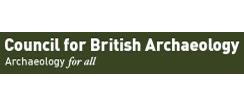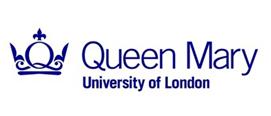Ancient Egypt
This list consists of lesson plans, activities and ideas to support the teaching of science through the topic of Ancient Egypt. It contains ideas for how to link science to the topic, tips on using the resources, suggestions for further use and background subject knowledge to support teachers in delivering the science objectives through this topic. Resources support the teaching of aspects of the topics: animals, including humans, forces, properties and changes of materials and Earth and Space. This enables teachers to choose which aspect of science they would like to teach within the overarching topic.
Visit the primary resources for cross curricular topics webpage to access all resource lists:
https://www.stem.org.uk/cross-curricular-topics-resources
Fake Poo
This gross activity involves examining fake poo to find out what people from the past ate. Investigate the diets of ancient cultures using safe 'fake poo'. The notes include recipes for making Aztec, Tudor, Viking and Roman poo, though I'm sure Mayan or Egyptian Poo could be created with a bit of research on diet in these times . 'Poo' samples could be adapted to to include diet of different types of people from the culture you're studying, for example linking to the above resource you could a wealthy person, a warrior and child. Children could then work scientifically to identify each of the different people from their poo! As well as developing investigative skills, the fake poo can lead onto a discussion of how modern diets differ from ancient ones.
In addition to this activity, children could model how the digestive system works as part of exploring how nutrients are transported within animals. A great way of modelling the digestive system can be found here.
APP for Primary Science - Mummification with Deborah Herridge
Mummification fascinates children of all ages. Whilst I have heard of one school who mummified a dead fish, it's not for everybody! This video clips explains how to mummify a tomato. There are also some excellent opportunities to observe over time, and to make detailed observations which could inform their literacy work.
Earth and space: space presenters
Ancient Egyptians believed the sun rises and sets each day, this myth is explained briefly here. After watching the clip, children could write about the apparent movement of the sun across the sky from the perspective of an Ancient Egyptian and compare that version to what is known today. This is a lovely opportunity to observe the and record the sun's position in the sky over the course of a day. This could be done by marking where the sun appears to be on the classroom windows over the course of the day, or by creating a sundial, or drawing round their shadow at regular intervals throughout the day. Session B in this lesson pack provides an investigation on sundials which further help children see that the Earth spins on its axis and this results in day and night.
Children may believe that it is the sun moving in the sky and that day and night is caused by the sun going behind the Earth or hiding behind clouds rather than because the Earth spins on its axis taking 24 hours or one day to do so. Having children model a spinning globe facing a light source is a great way of helping them to understand why we have day and night. Try putting a little flag or small plastic figure on the UK and ask them at different points in the spin of the globe whether it is daytime or night time in the UK and why they know this. Another flag could be put on Australia so they can see that whilst some countries have daytime others have night as they are facing away from the sun.
Building the pyramids
This clip shows how the heavy stone used to build the pyramids was transported by dragging it in a large sledge. Planks of wood were placed in front of the sledge and water was poured in the path of the sledge. This reduced the friction.
Children could recreate this as an investigation, dragging a small wooden object over different surfaces to find out how to reduce the friction. Children could use Newton meters to measure how much force is needed to move the object on different surfaces. They could also find out whether pouring water in front of the object reduces the friction.
Time Raiders: Death of a Mummy
This CSI type activity, is aimed at lower secondary, but could be adapted to work with older primary children. Children Using the context of the excavation of an Egyptian tomb, children decode hieroglyphs to learn about the main organs in the human body. The students evaluate evidence from a recently discovered mummy to draw conclusions about the person’s life and the cause of death.
A cut and stick activity is used to describe the mummification process before the students translate the hieroglyphs on the canopic jars found in the tomb and identify each of the body organs inside.
Fact cards provide information on the basic structure and function of the heart, kidneys, lungs, stomach, intestines, liver and brain. They also present evidence from the scientific analysis of the organs, which the students use to draw conclusions and write a short report on their findings
IET - Ancient Egyptians
A set of resources aimed at primary-aged pupils from the Institution of Engineering and Technology (IET) using Ancient Egypt as a theme. The resources include activities to develop knowledge and skills in design technology and maths with cross-curricular links to history, geography, art and literacy.
Hieroglyph pixel puzzle
Combine Egyptian Hieroglyphics with the teaching of pixels and digital images in computing, with this colour by Egyptian hieroglyph pixel puzzle.





